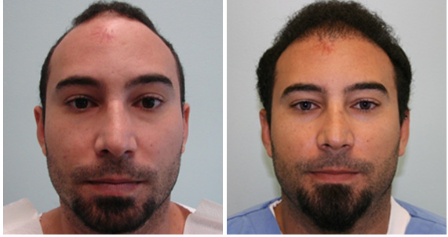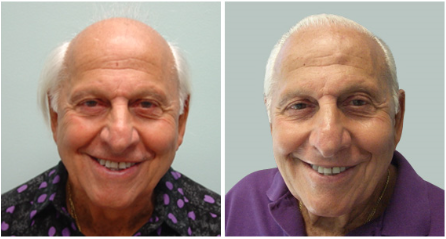Follicular Unit Transplant
Follicular Unit Transplantation (FUT) is an outpatient procedure where a surgeon removes a strip of hair from a donor region and transplants the follicles to an area with thinning hair or bald. The transplants are made to look natural and do minimal damage to neighboring hair grafts. Usually patients undergoing this procedure require only one session to see maximum results.
Benefits of the FUT Hair Transplantation
- Convenient in-office procedure.
- Very narrow linear scar that can be easily covered by hair growth.
- Replicates original hair growth pattern.
- Preserves natural hairline.
- Recovery in a few days at recipient area and a few weeks at donor area.
- Typically only modest post-treatment swelling.
How is FUE Done?

- Patients undergo local anesthesia and a small strip of skin–usually just under the bump in the back of one’s head–is prepared as a donor site. Only the strip of hair at the donor site is trimmed for FUT.
- One or several small skin strips of tissue are removed from the donor site. Hair grafts are dissected.
- The recipient area is prepared and very small incisions are made on the scalp to imitate natural hair growth.
- Individual grafts are transplanted on the incisions considering the hair angle and density.
Who is the Best Candidate for FUT?
An optimal candidate for FUT has high-density hair on the donor site; has hair that grows parallel to the scalp; and has a relaxed scalp rather than a tight one. No matter the technique, hair transplants will only work if there are enough hair follicles to harvest. Hair that grows perpendicular to the scalp will not cover the line incision needed to harvest the grafts from the donor site. If a patient has high-density hair that covers the incision, but the physician can’t access the graft for the procedure due to a tight scalp, the patient isn’t a good candidate.
Patient Results




How is the Recovery?
FUT is an outpatient surgery performed under local anesthesia and can be completed in a few hours but patients should have a ride arranged as to not drive while still feeling the effects of the anesthesia. After the surgery, the patient’s head will be wrapped to protect the incision from infection and the site will be sensitive for a several days. Patients are instructed to keep their heads elevated–even while sleeping–to reduce the swelling. Surgeons instruct patients not to shower for 24 hours and to not rapidly remove any crusting from the implant site–although some patients can gently use a soft, wet cloth on the crusting spots and at the site of the incision. The crusting will last for about a week. Patients will shed their implanted hair between 2 weeks and 2 months following the surgery. The new hair will grow by months 3 and 4 and the hair will be 2 – 3 inches long by months 5 and 6.
